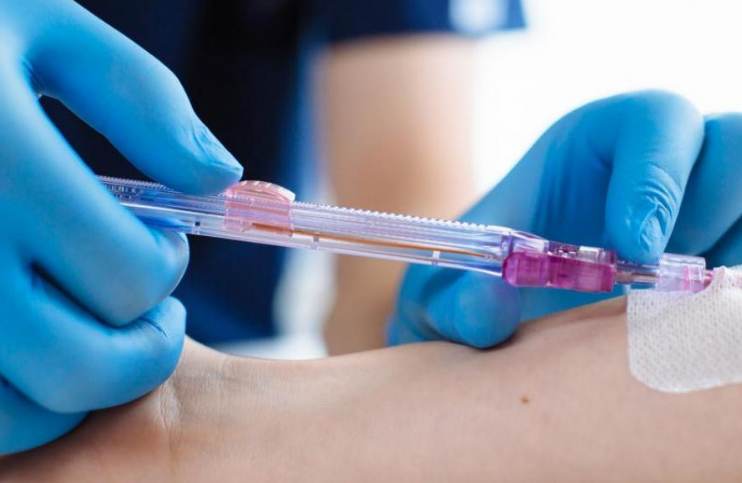



Schaffhausen, Switzerland-based Physeon is trying to bring its Veinplicity device to the U.S. market. The device is designed to make veins easier to access on the first stick, preventing patients from being treated as pincushions.
"Patients only deserve to be stuck one time," Physeon CEO Patrick said.
The Veinplicity device stands to nurses and patients with difficult intravenous access (DIVAs).
The company recently selected Mayo Clinic as the U.S. trial site for Veinplicity with Gregory Schears, MD, serving as the principal investigator.
The VIVA trial (Veinplicity for Improved Venous Access) is randomized using standard tourniquet technique vs. Veinplicity plus tourniquet in 246 patients. The primary endpoint is first stick success for superiority. Other key endpoints include the number of attempted sticks to successful vein access, total procedure time, patient and clinician satisfaction scoring and change in the vein quality score from baseline to post-stimulation as well as healthcare economics.
Up to 80% of hospitalized patients need a peripheral IV cannula for the infusion of fluids and medications, Kullmann said.
The Veinplicity device uses electronic stimulation that passes through electrodes placed on the patient's palm and bicep. The stimulation is intended to significantly increase vessel size, vessel wall rigidity, and stability of targeted peripheral veins, making them easier to find and easier to cannulate for an IV.
In one of the company's initial clinical studies, the dilatory effect of Veinplicity was compared to the dilatory effect of heat pack treatment, which has long been considered the standard of care when veins cannot be palpated. As well as dilating veins 38% more, Veinplicity¡¯s effect lasted twice as long as heat treatment, allowing clinicians crucial extra time to perform this important procedure.